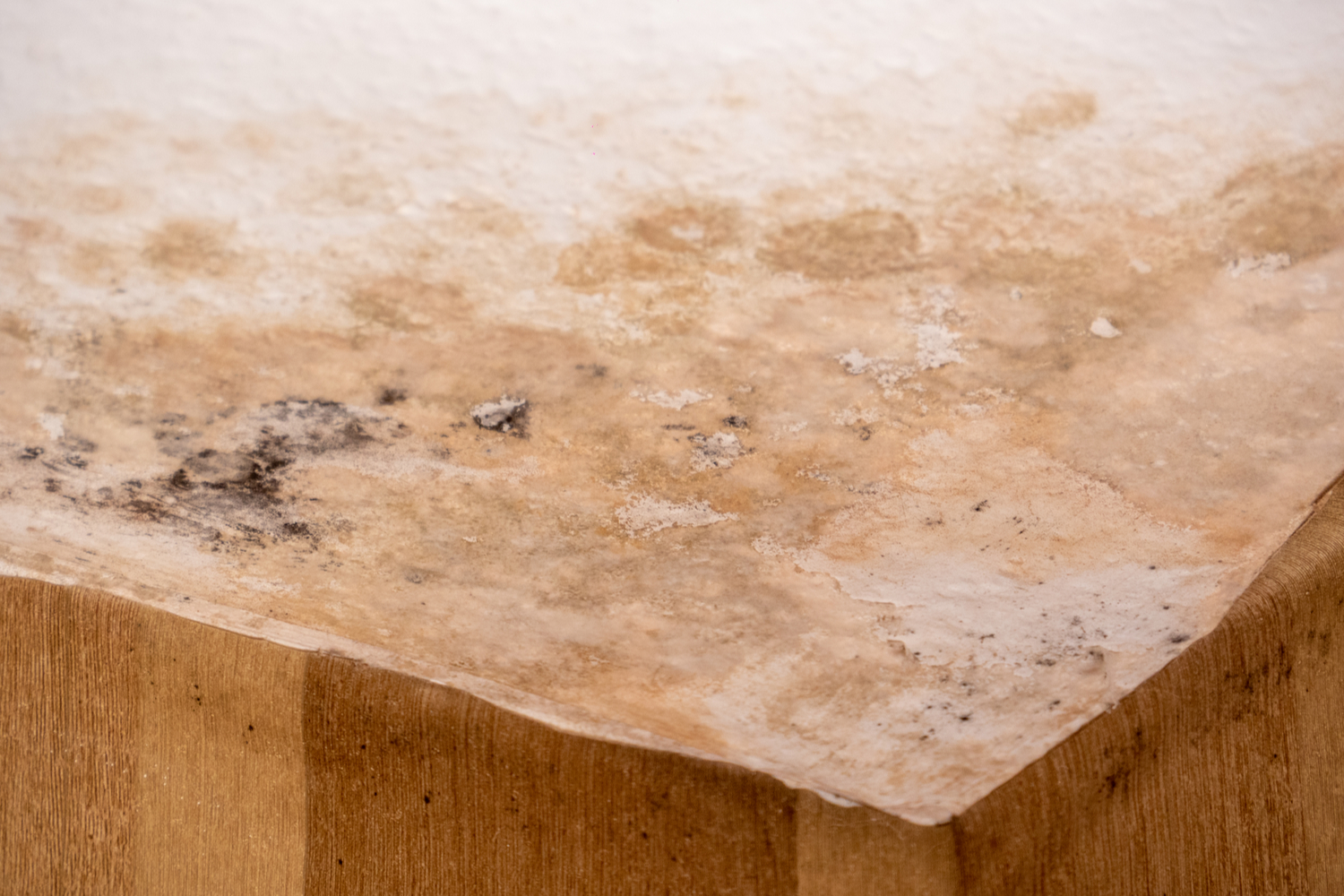If you discover mold on the ceiling of a room in your home, you probably have a much bigger problem than you think. For one thing, if there is a small amount of visible mold that you can see, there is a good possibility that there is a larger amount of the mold that you can’t see, growing on the back side of the ceiling drywall. In addition to that, there must be some type of moisture problem from a water leak or high humidity above the ceiling.
Why is Mold growing on my Ceiling?
For mold to develop, an organic food supply is needed along with moisture, and moisture is the key. Just like any other “living” thing on earth, mold requires water. The building materials, wood, drywall, etc. provide the food, which cannot be eliminated. Only the source of any moisture can be controlled or eliminated. Stop the water and you stop any chance for mold to grow.
Somewhere above that spot of mold that you can see is a water problem. It could be a roof leak, a humidity problem in the house or attic, or some type of plumbing system leak. Find the water, eliminate it, and you will be half way home towards solving your mold problem.
What are the dangers of Ceiling Mold?
Everyone reacts differently when exposed to mold, but these are some of the more common symptoms:
-
Skin Rash
-
Eye Irritation
-
Listlessness
-
Headaches
-
Sore Throat
-
Runny Nose or Stuffy Sinuses
How do I go about Removing Ceiling Mold?
If you search the Internet for “how do I remove ceiling mold” undoubtedly you will find some really bad advice from self-proclaimed “experts”. These “experts” will tell you to mix so many parts chlorine bleach with so many parts water then using a clean cloth, just wipe your cares (and the mold) away. Big, big, big mistake! Doing this will cause one or all of these things to happen:
-
Water the mold (much the same thing as watering a plant).
-
Spread the mold to other areas.
-
Make yourself or other family members ill from inhaling chlorine fumes.
-
Waste a lot of time doing hard work with your hands reaching above your head for nothing.
First off, chlorine is scientifically developed NOT to penetrate porous surfaces. Maybe if you live in a home made out of 100% concrete, bleach will work. But most of us don’t live in a house like that.
Bleach is made up of about 5-6% chlorine and the rest is water. Since the chlorine doesn’t penetrate, bleach will only work on the mold that you can see, the surface mold. But mold, similar to plants, has roots. The chlorine in the bleach will not penetrate the surface, but guess what ingredient in the bleach will penetrate? You guessed it, the water. Essentially you just watered the mold’s roots. That’s why in a couple of days the mold will return and all of your hard work will be worth nothing.
You should never try to remove mold yourself by wiping it with bleach. As a matter of fact, you should never try to kill it either. Attempting to kill mold may cause the mold to release dangerous mycotoxins into the air as a form of self-defense. These mycotoxins can possibly cause more harm than if you were to physically come into contact with the mold itself.
How SHOULD you Remove Ceiling Mold?
Forget those Internet “experts” and call a nationally certified mold removal company like Water Mold Fire Restoration at 800-905-0277. Our mold remediation technicians have received special training to safely and efficiently remove mold from both residential and commercial properties. They understand mold’s dangers and know how to remove mold without allowing it to spread or to harm any residents or your employees. And the best part… our initial inspection and estimate of repairs is free of charge. Phone us day or night (800-905-0277) or contact us by email at help@watermoldfire.net. We’ll be happy to answer any questions you may have about ceiling mold and its removal.








